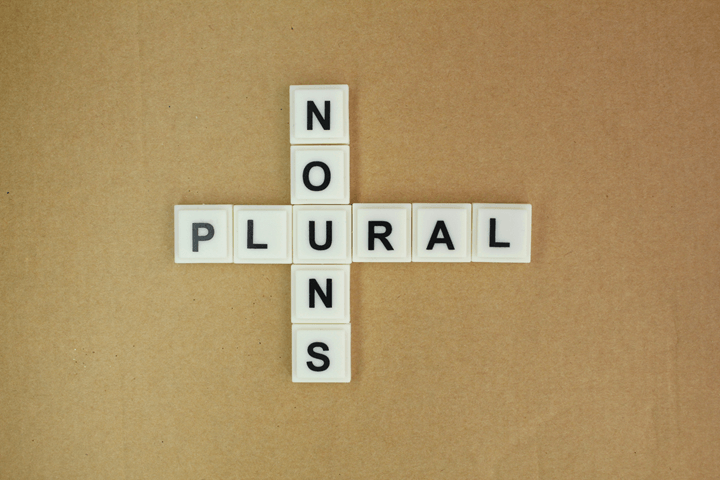Mastering the plural in arabic is a major hurdle for any language learner. Indeed, unlike English, where you usually just add “s,” arabic plurals are highly systematic but follow three distinct, fundamental patterns. Consequently, knowing these Types of Plurals in Arabic is the key to expanding your vocabulary quickly and accurately.
Plural in Arabic: The Three Core Categories
All plurals in arabic fall into one of these three categories. Initially, the first two are predictable (Sound Plurals), but the third (Broken Plurals) requires memorization yet follows specific Arabic Plural Patterns.
Sound Masculine Plural (الجمع المذكر السالم)
First, this is the most predictable form for pluralizing masculine nouns and rational beings. The original noun remains “sound,” and we simply add a suffix.
- Rule: Add ـُونَ (-ūna) in the Nominative Case (Subject) or ـِينَ (-īna) in the Accusative/Genitive Cases (Object/Preposition).
| Case (Function) | Suffix | Singular Example | Plural Example | English Meaning |
|---|---|---|---|---|
| Nominative | ـُونَ | مُسْلِم (muslim) | مُسْلِمُونَ (muslimūn) | Muslims |
| Accusative/Genitive | ـِينَ | مُدَرِّس (mudarris) | مُدَرِّسِينَ (mudarrisīn) | teachers |
| Example Noun | مُهَنْدِس (muhandis) | مُهَنْدِسُونَ / مُهَنْدِسِينَ | engineers |
Sound Feminine Plural (الجمع المؤنث السالم)
Next, this is the predictable form for most feminine nouns (usually ending in ـَة or ـَا).
- Rule: Remove the final feminine marker (like ـَة) and add the suffix ـَات.
| Case (Function) | Suffix | Singular Example | Plural Example | English Meaning |
|---|---|---|---|---|
| Nominative | ـَاتُ | سَيَّارَة (sayyārah) | سَيَّارَاتُ (sayyārātu) | cars (subject) |
| Accusative/Genitive | ـَاتِ | طَالِبَة (ṭālibah) | طَالِبَاتِ (ṭālibātī) | female students (object/after prep.) |
| Example Noun | مَكْتَبَة (maktabah) | مَكْتَبَات (maktabāt) | libraries |
Crucial Note on Case: The Feminine Plural is unique because the Accusative case (object) and the Genitive case (after preposition) are identical and both take the Kasra (ـِ).
Broken Plural (جمع التكسير)
Finally, this is the trickiest category. Broken plurals are formed by changing the internal structure of the singular word, rather than by adding a simple suffix. Although memorization is needed, most fall into predictable Arabic Plural Patterns.
- Rule: The word breaks its singular structure (like English foot becoming feet).
| Pattern Name | Pattern Form | Singular Example | Plural Example | English Meaning |
|---|---|---|---|---|
| Plural of Fewness | أَفْعَال (af‘āl) | قَلَم (qalam) | أَقْلَام (aqlām) | pens |
| Plural of Multitude | أَفْعِلَة (af‘ilah) | طَعَام (ṭa‘ām) | أَطْعِمَة (aṭ‘imah) | foods |
| فُعُول (fu‘ūl) | قَلْب (qalb) | قُلُوب (qulūb) | hearts | |
| فِعَال (fi‘āl) | جَبَل (jabal) | جِبَال (jibāl) | mountains | |
| فَوَاعِل (fawā‘il) | مَكْتَب (maktab) | مَكَاتِب (makātib) | offices |
Why Arabic Plural Patterns Matter: The Grammar Rule
The primary reason to distinguish between these Types of Plurals in Arabic is to determine grammatical case and word agreement.
- Sound Plurals use the letter suffixes (ـُونَ (−uˉna)/ـِينَ (−iˉna) and ـَات (−aˉt)) for case.
- Broken Plurals follow the short vowel case endings (ـُ (−u)/ـَ (−a)/ـِ (−i)) just like singular nouns.
The Most Important Rule: Non-Human Plurals
Crucially, any plural in arabic that refers to non-human things (whether sound or broken) is always treated grammatically as a Feminine Singular noun.
- Therefore, this means any adjective, verb, or demonstrative pronoun referring to them must be in the feminine singular form.
| Non-Human Plural | Pronoun Agreement | Adjective Agreement | English Meaning |
|---|---|---|---|
| كُتُب (kutub – books) | هَذِهِ الكُتُبُ. (Hādhihi al-kutub.) | جَمِيلَةٌ (jamīlah) | These books are beautiful (singular feminine) |
| أَنْهَار (anhār – rivers) | تِلْكَ الأَنْهَار. (Tilka al-anhār.) | جَارِيَةٌ (jāriyah) | Those rivers are flowing (singular feminine) |
| سَيَّارَات (sayyārāt – cars) | تِلْكَ السَّيَّارَات. (Tilka as-sayyārāt.) | كَبِيرَةٌ (kabīrah) | Those cars are big (singular feminine) |
If you can identify the type of plural in arabic, you can instantly determine the correct ending for any sentence! Ultimately, focus on recognizing the three primary rules, and your Arabic grammar will become much stronger.
Conclusion
Mastering the plural in arabic is a vital step toward practical fluency. Ultimately, knowing the Arabic Plural Patterns unlocks a huge chunk of vocabulary and grammar. To accelerate your progress and get targeted practice, consider using Kaleela App. Keep practicing, and you’ll soon conquer all arabic plurals with confidence!



